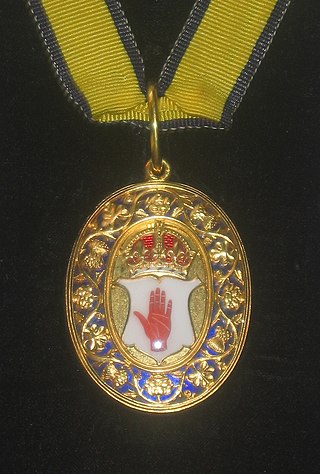
A baronet or the female equivalent, a baronetess, is the holder of a baronetcy, a hereditary title awarded by the British Crown. The title of baronet is mentioned as early as the 14th century; however, in its current usage it was created by James I of England in 1611 as a means of raising funds for the crown.
John Baird may refer to:

There have been three baronetcies created for persons with the surname Booth, one in the Baronetage of England and two in the Baronetage of the United Kingdom. The 1916 creation remains extant, the 1835 creation became extinct in 1896 and the 1611 baronetcy has been dormant since 1797. The senior line of the first creation was elevated to the peerage as Baron Delamer and Earl of Warrington.
There have been three baronetcies created for members of the Anstruther family, two in the Baronetage of Nova Scotia and one in the Baronetage of Great Britain. Two of the creations are extant while one is extinct.
Sir David Dalrymple, 1st Baronet, of Hailes was a Scottish advocate and politician who sat in the Parliament of Scotland from 1698 to 1707 and in the British House of Commons from 1707 to 1721. He served as Lord Advocate, and eventually Auditor of the Exchequer in Scotland in 1720.

General Sir David Baird, 1st Baronet, of Newbyth, GCB was a British Army officer.
Baird may refer to:

Sir John Baird, 2nd Baronet, of Newbyth of Newbyth, Haddington, was a Scottish politician who sat in the House of Commons from 1715 to 1722.
There have been six baronetcies created with the surname of Leigh: two in the Baronetage of England, one in the Baronetage of Ireland, one in the Baronetage of Great Britain and two in the Baronetage of the United Kingdom. The only creation remaining extant is that of Altrincham.
There have been three baronetcies created for persons with the surname Osborne, two in the baronetage of England and one in the baronetage of Ireland. Two creations are extant.
There have been four baronetcies created for people with the surname Parsons, two in the Baronetage of Ireland, one in the Baronetage of England and one in the Baronetage of the United Kingdom. One creation is still extant as of 2008.
Sir David Baird, 2nd Baronet, of Newbyth was a British baronet and captain in the British army.

There has been six baronetcies created for persons with the surname Shaw, one in the Baronetage of England, one in the Baronetage of Nova Scotia and four in the Baronetage of the United Kingdom. Two of the creations extant as of 2010.

Admiral Sir John Kennedy Erskine Baird, KCB was an officer in the Royal Navy, who is chiefly remembered for commanding the losing side in the 1888 annual naval manoeuvres.
Before the Acts of Union 1707, the barons of the shire of Aberdeen elected commissioners to represent them in the unicameral Parliament of Scotland and in the Convention of the Estates. The number of commissioners was increased from two to four in 1690.

Sir David Baird, 3rd Baronet, of Newbyth, DL was a Scottish army officer and landowner.

The first Baird baronetcy, of Newbyth in the County of Haddington, was created in the Baronetage of Nova Scotia on 4 February 1680 for William Baird, 1654–1737, son of John Baird, Lord Newbyth. He was registered an advocate and later made Lord of Session.

The Baird baronetcy of Saughtonhall in the County of Edinburgh, was created in the Baronetage of Nova Scotia on 28 February 1695 for Robert Baird (1630–1697), a merchant in Edinburgh, and a partner in both the Leith Sugar House and the Carolina Society. The title was created with remainder to the heirs male of his body.

The Baird baronetcy of Newbyth, second creation, in the County of Haddington, was created in the Baronetage of the United Kingdom on 13 April 1809 for the soldier David Baird, grandson of William Baird, a younger son of Sir Robert Baird, 1st Baronet, of Saughtonhall. His father, William Baird, had inherited the Newbyth estate in 1745 on the death of Sir John Baird, 2nd Baronet, of the 1680 creation. The baronetcy was created with remainder to Baird's elder brother Robert Baird and the heirs male of his body. Sir David Baird died childless and was succeeded, according to the special remainder by his nephew David Baird, the second Baronet. At the death of the 6th Baronet in 2022, his fourth cousin, Sir Andrew James Baird became the 7th Baronet in April 2023.